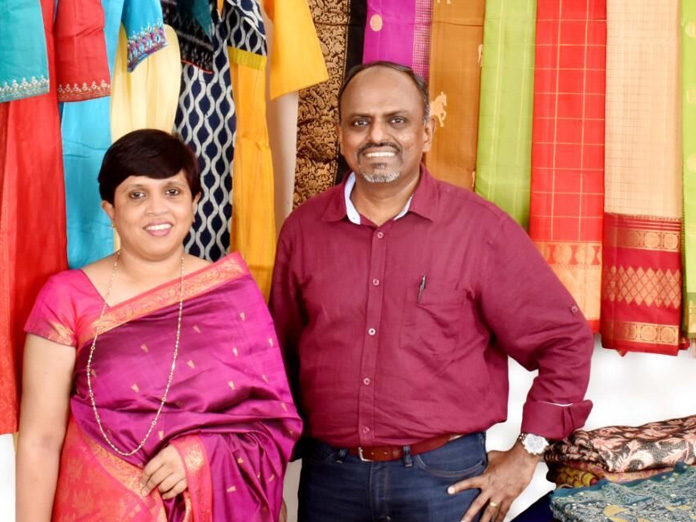Now, an online platform for Indian handlooms

To overcome these issues, Avishyacom was born out of a passion for beautiful Indian ethnic wear sarees, salwars, dupattas, fitted garments, fabric, jewellery and accessories The mission is to democratise access to the timeless style and beauty of Indias handcrafted products
To overcome these issues, Avishya.com was born out of a passion for beautiful Indian ethnic wear... sarees, salwars, dupattas, fitted garments, fabric, jewellery and accessories. The mission is to democratise access to the timeless style and beauty of India's handcrafted products.
In order to boost the online sale of handlooms, Avishya.com was launched by Jawahar Singh and Kalaivani Sadagopan in February 2016 in Chennai with a vision to build a ‘best-in-class’ online platform that would bring together and showcase the handcrafted products produced by artisans, weaving societies, brands and designers across India.
Jawahar Singh and Kalaivani Sadagopan talks about their vision. “After 20 – 25 years of working as senior professionals in the corporate world both of us were tired of the ‘rat race’ and wanted to start a venture of our own. We were idealistic and wanted to do something meaningful that we could be proud of. We were looking for opportunities where our work would make a real difference to people’s lives in a profitable and sustainable way. By sheer coincidence we happened upon the Indian handloom story,” they share.
About the revival of Indian handloom in the digital era. “The market for beautiful Indian handloom products is spread across the length and breadth of India – metros, mini metros, tier I and II towns. In addition, there is a huge international market for handlooms from the Indian diaspora in the US, UK etc. With growing consciousness of well-made Indian apparel and with access to the internet on the palms of their hands through mobiles, women find it much easier to search and buy the products they want on their favourite websites,” says Jawahar.
“Indian handloom products have a rich and varied heritage ranging from banarasi weaves and chikankari work in the north to the Kanchipuram and Uppada sarees in the south. The east with its beautiful jamdani/dhakai weaves, Odisha ikats and tussar/muga silks have its unique appeal. In the western/north-western part of India, Gujarat and Rajasthan are home to the bandhani tie and dye fabrics, Patan patola and kota sarees. The Andhra and Telengana regions also have multiple weaving clusters ranging from Pochampally Ikats to Uppada and Narayanpet sarees,” says Kalaivani.
How digitization is boon for hundreds of talented Indian weavers? “Though many artisans and weavers may not know the nuts and bolts of harnessing technology for their livelihood, they are quite aware of current market and fashion trends thanks to social media. Online platforms that are marketing savvy, technologically competent, socially conscious and committed to long term partnerships could make a huge difference in improving the economic well-being of weavers,” says Jawahar.
However, the main challenges according to Jawahar were the sourcing and management of fragmented production centres and educating potential customers about the beauty and uniqueness of Indian handlooms. “Inventory costs, warehousing capacity and marketing challenges in a traditionally ‘touch and feel’ category like handloom are some of the usual risks faced by any online retailer,” he adds.
















